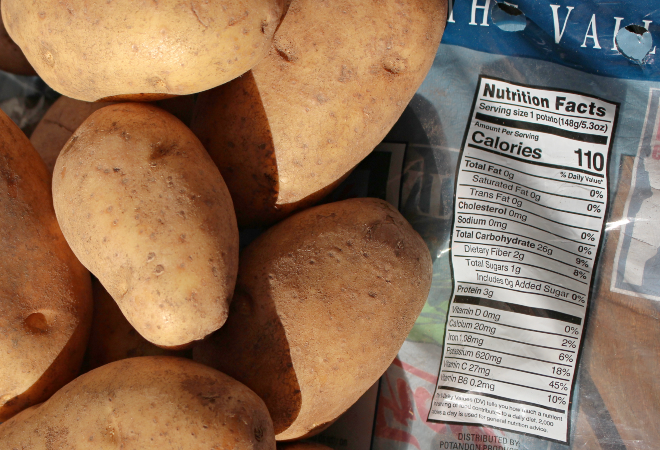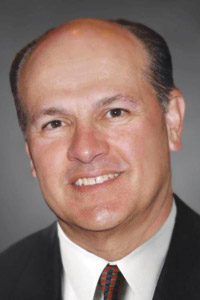
Potato industry leaders discuss demand shift impacts of COVID
Longtime Washington State Potato Commission Executive Director Chris Voigt offered an interesting take on how a shift from eating out toward eating at home could affect the potato industry.
Voigt said the notion that people will ultimately eat the same amount of food whether they buy it at a store or at a restaurant isn’t accurate in a lot of cases.
“It’s about consumer behavior, and I’ll use myself as an example,” Voigt said. “If I go out to a restaurant and order a sandwich and fries come with the sandwich, I’m going to get the fries and I’m going to eat the fries.
“But if I make a sandwich at home, how often am I going to take the time to get the fryer out or turn on the oven and make fries? Maybe that takes me 20 minutes, whereas the sandwich takes 45 seconds. I’m not going to have fries nearly as often.”
Several potato industry leaders, Voigt included, recently offered Spudman insight and opinions on how demand has shifted since the start of COVID-19 and what the coming months might bring.
Blair Richardson, CEO, Potatoes USA
“Predicting the future has never been easy. The disruptions and chaos created by the pandemic and all the reactions to the related concerns makes this even more difficult this year. Notwithstanding this uncertainty, the demand for potatoes and potato products has held strong as compared to many foods. Retail sales are up 15% over the past six-month period on average. Many restaurants are simplifying their menus but keeping potatoes on the menus more often than not. People do love potatoes regardless of whether they are cooking them at home or choosing them at restaurants.

“Obviously, the massive upheaval experienced by the foodservice sector is a concern for us considering 58% of all potatoes consumed in the United States were through foodservice channels prior to the pandemic. Not all of these potatoes were easily redirected to the fresh market, which is likely related to the pricing fluctuations seen in some regions of the country. With similar disruptions in the export markets, things are certainly out of balance at the moment.
“However, it does appear we actually made gains within the chaotic foodservice world this year with an increase in the percentage of menus with potatoes listed. This increased to 84%, which is an all-time high for our industry. I believe this is related to consumer preferences for potatoes as well as the functionality, value, and versatility potatoes bring to foodservice operators.
“It is my belief that demand for potatoes will remain strong and will likely exceed supplies for some types and sizes over the coming year. The uncertainties of the pandemic will probably create further challenges and opportunities for our industry as we all adapt to the evolving environment. I do believe people have a love for potatoes that will override the chaos. It is just up to our industry to navigate all the chaos and deliver our potatoes to consumers in whatever form they desire.”
Frank Muir, president and CEO, Idaho Potato Commission
Frank Muir is optimistic that the foodservice-to-eat at home shift will have lasting effects for retail purchases of potatoes, even after the pandemic. He added that versatile potatoes, like the Russet Burbank, helped Idaho growers deal with the shift in demand that COVID-19 caused.

“The majority of our potatoes were sold coming out of Idaho. I think we’ve weathered a very significant storm, but we’re not all out of the woods; we’ve got a long way to go. Foodservice is still down significantly. We will continue to do programs that will move whatever foodservice potatoes we’ve got through retail and make those changes.
“For the long-term issues, what impact does this have? No. 1, it’s going to change at least semi-permanently, if not long-term permanently. What I mean by that is that I think that consumers have learned that potatoes should be a weekly purchase, if they’re not already. It’s a way to stretch their budget and it’s an item that all their family will eat.
“We’re doing ads right now that will go to the (retail) buyers showing them that they have to look more carefully at their data. Our field guys are educating the retail buyers that the data has changed, movement has changed. We’re nine months into this pandemic and we’re still double-digit ahead of last year in Idaho. So, they need to be ordering more potatoes as we come up to the Thanksgiving holiday than they would have last year. We’re educating them that they should increase shelf space for the potatoes because they’re demanding that kind of shelf space.”
Chris Voigt, executive director, Washington State Potato Commission
In Washington, where growers are heavily depended on processing contracts, COVID’s impact during planting season threw them for a loop. Contracts and acreage were cut. Voigt said things have calmed down some since, but added there is still plenty of uncertainty heading toward winter.

“The big question right now is: what is the future going to look like? That is still kind of up in the air. For the most part, demand has kind of stabilized. We kind of know where we’re at now, but there is already talk of second or third waves of COVID spikes. Is that going to shut down a lot more restaurants or foodservice facilities?
“I do think we have a lot more certainty today than we had back in the middle of April. What I’m hearing is that there is a chance we could actually be short on product, that could be a possibility. I don’t think we’re going to have to worry about huge excesses, that’s for sure. I think there is enough potatoes to meet demand, although there could be some (supply situations) in the spring if demand does pick up.
“We still don’t know exactly what demand is going to be. It used to be (in recent years), you could pretty much set your watch to what demand is with how many potatoes everybody is going to eat in a year or a month. … That was all disrupted when we shut down foodservice. We’re starting to get data in and, obviously, sales are still off in foodservice, but yet at least we have a better idea of what it is now. It might get worse, but I don’t think it will be hugely worse, like we feared (earlier this year).”







